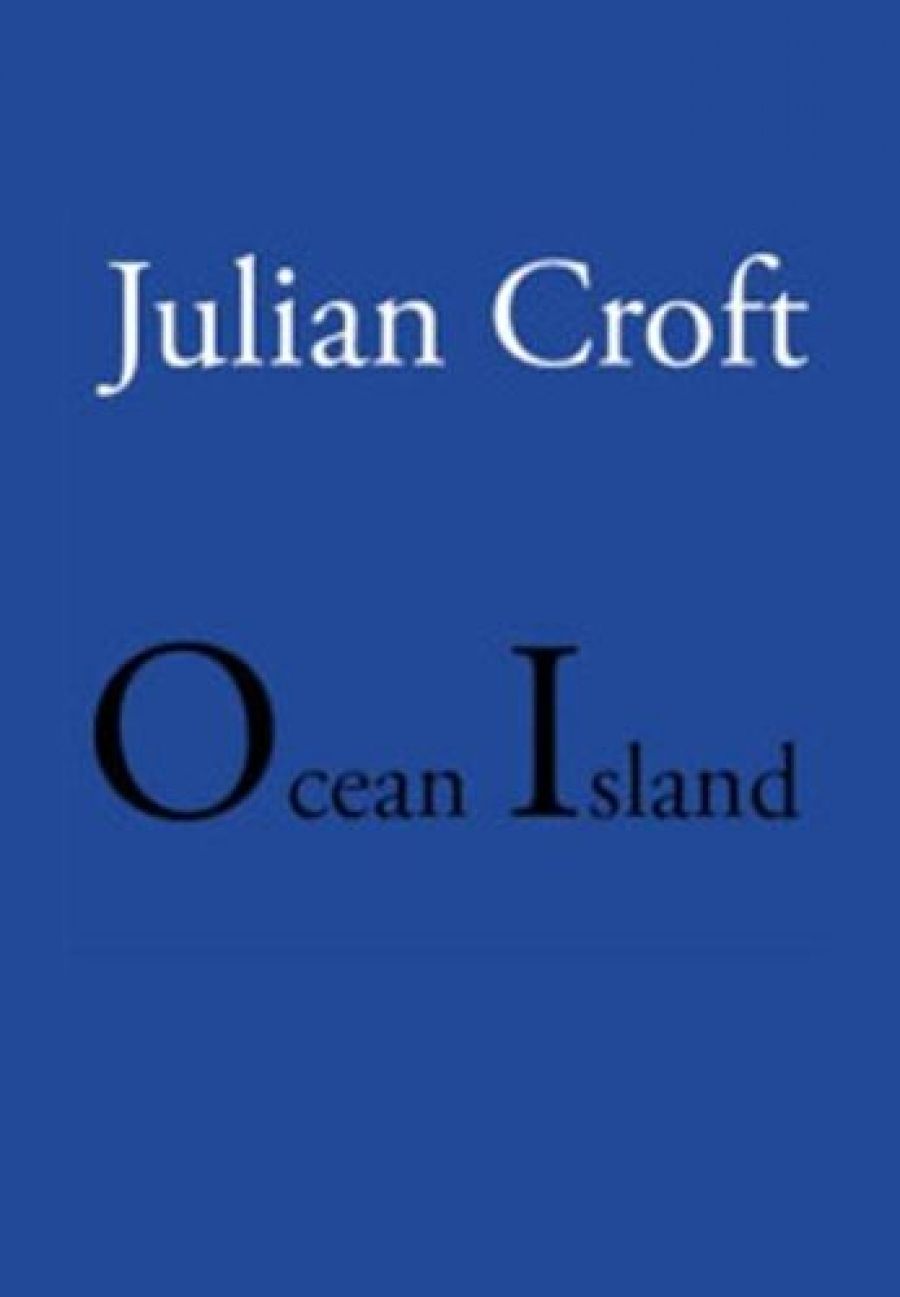
- Free Article: No
- Contents Category: Poetry
- Review Article: Yes
- Online Only: No
- Custom Highlight Text:
Julian Croft, born in 1941, is a poet whose work deserves a wider audience. This new work, Ocean Island, is by far the best of his books and it promises – in the new modes it works out – a rich harvest of poems in the future. Born during the war, and having spent most of his life in an academic position (‘I’ve marked too many essays, / castrated too many days’), Croft is one of those who has taken the long, slow road to poetic maturation.
- Book 1 Title: Ocean Island
- Book 1 Biblio: John Leonard Press, $21.95 pb, 84 pp
- Book 1 Readings Link: booktopia.kh4ffx.net/qn4665
The weaknesses of his earlier poems are caused by uncertainties as to how to deal with his two major themes. The first of these is the documentation and registration of the place he grew up (Newcastle) and the time he grew up (immediately postwar). The second is the much more subjective narrative of the growth of his own inner life – one of the few parts of our existence that gets richer and more meaningful the older we get. In the first two books, Breakfasts in Shanghai (1984) and Confessions of a Corinthian (1991), you can see him casting around for ways in which to deal with these themes: there are portraits, awkward narratives of love affairs, A.D. Hope-like lyrics, and denunciations in the mode of Juvenal. At the same time, you could sense that he needed to connect these themes: his inner life is, after all, as much a product of the time and place of his early years as it is of the books read, sights seen and relationships begun during periods of study leave. The poems of the first books don’t really solve this issue, but many in Ocean Island are far more promising. Many can also be found in an earlier pamphlet, After a War (Any War), published by Kardoorair Press in 2002. But they are seen to much better advantage here, distilled into seven sections. The simplest of these is the one which is pretty well given over to poems about Newcastle. The city is a rich presence, and the poetry is especially alert to the processes of industrial production. It also borrows considerable energy from the simultaneously arcane and tactile technical words of mining.
Croft’s poetry is also sensitive to the processes of industrial change. ‘Cottage Industry’ is a brilliant one-page compressed history of the coal industry in Newcastle, of the history of getting ‘wagons full of vanished swamp // high onto the bright morning wharves’; and ‘Dyke End’ has a glimpse, Dickensian in tone, of loading the ships:
the sledge smashed on the hinge-bolt’s head
and the terrible gasp and collapse of the coal
blackened souls tumbling back into chaos
a ruined forest smoothed by minor devils
But writing like this, so consonantal and aggressive, in its very desire to ‘capture’, does exclude the self, and Croft’s poetry, as I have said, has always wanted to include the self. His first book began, after all, with a guilt-ridden remembrance in postwar Newcastle, and he has always been present in his poetry, sometimes, as with ‘Silos’ in Ocean Island, as no more than a little boy appended to an evocative description. The other section devoted to Newcastle is about the earthquake. As one might expect, it is rich in allusions to fault-lines, familial and cultural, trepidations and exposures. Thus it is not about capture but about the symbolic connections between the inner and outer worlds. This, in general, is the drift of these later poems and, although it is not a method that always works (the problem is to keep the specificity of the outer world while simultaneously allegorising it), it serves Croft well because it produces some fine poems, especially in the sections ‘Landscapes’, ‘Lake Land’ and ‘Window’.
A poem called ‘Making Hay’ is about seeing a tree full of galahs on the outskirts of Hay and wondering whether they symbolise the poet’s access to a secret, illuminated world or whether it is an entrance to a world that everybody but he knows already. I like these kinds of doubts; after all, the only thing which is unacceptable in older poets is absolute certainty. Other poems use the regular trip from Armidale down the range to the coast to speculate variously on past versus present, the transcendent versus the chthonic, and so on.
It seems a mode that will serve future poems well, though it would be a shame if Croft were to abandon the precise poems about his origins. The story of the inner life benefits, if anything, from a little vagueness, because it challenges the reader to try to understand the map of this most private of worlds. At any rate, it is clear from the poems of Ocean Island that worrying about past poems, criticising them, changing subjects or trying to approach a subject more successfully is a hallmark of this poet. As is the question of allegorising. The book’s first poem looks at a bird and speculates on the ways it can be drawn into meaning as an image of a poet:
You can allegorise this several ways
piping bird means poet
sand his element
or you can think it up
and see the scuttling cuttlefish-white
fluffed up body
torpedoing across the beach
a foot above its invisible stilts
that’s the poet again
defying gravity chasing something
unseen in the dunes
ready to gobble up the living
Devourer-of-life and writer-on-sand are two images of the poet, but Croft’s poetry suggests that there are many more.


Comments powered by CComment